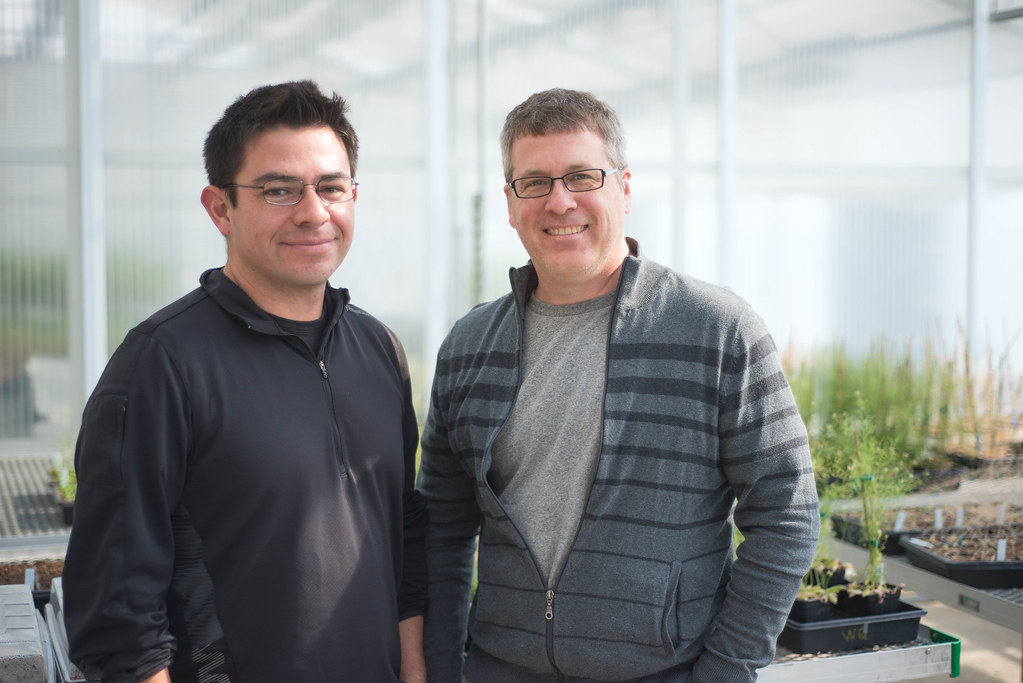News
Competing signals: scientists explore how iron sensing and plant immune signaling interact with $1.2 million NSF grant

By Josie Heimsoth, Bond LSC
Plants must integrate many environmental signals to successfully grow and reproduce. Three researchers at MU have recently discovered a new connection between some of these signals that recently led to a $1.2 million National Science Foundation (NSF) grant that may lead to improvements in both plant immunity and plant nutrition.
Lead researcher Scott Peck has studied how plants respond to changes in their environment for decades. The Bond Life Sciences Center principal investigator and biochemistry professor primarily studies plant defenses, including bacterial infections and the initiation of defense responses to stop these bacterial invasions.
David Mendoza, Bond LSC scientist and associate professor of plant sciences, and Antje Heese, associate professor in biochemistry, join Peck in receiving this NSF integrative biology (IntBio) grant of $1,242,385. This new NSF funding program supports researchers who work in dynamic, diverse, and collaborative interdisciplinary teams. Two in the team work together in Bond LSC and all three are members of the Interdisciplinary Plant Group (IPG), a University of Missouri collaborative community pursuing new and transformative ideas in plant biology.
“This is one of those cases where science starts coming together,” Peck said. “We realized a convergence of our individual research results because of the communication that goes on with the Life Science Center and the IPG, and so we started thinking about where this might be coming together and why this is occurring.”
The project started this past September, and each of the scientists has something of their own to contribute to the research. Peck studied signaling proteins during the infection, Mendoza looked at transport of iron in cells and Hesse explored how proteins move through the cell.
The grant was awarded to the three to expand their research on how plants regulate the amount of proteins during a bacterial infection in plants. One protein stuck out more than the others, and that is IRTI (iron regulated transporter 1), an iron transporter protein located in the roots of plants.
“The whole plant is coordinating its protein composition even though the perception is in one spot,” Peck said. “But it’s rapidly controlling protein abundance in another part of the plant.”
Peck said they have evidence that the plant senses iron levels in the leaves and sends a signal to the roots to control the IRT1 protein. Normally, the protein is inversely regulated by the levels of iron, and in low iron conditions, the protein should increase. Peck said while they prepared the plants for treatment, without thinking about a role for iron, they inadvertently put them under low iron conditions for a short time. Despite these conditions, the protein did the opposite. When they added the bacterial signals, it still resulted in a large decrease in the protein even in the absence of iron.
“All this data indicated that the immunity signal or the defense signal overrides the nutritional signal,” Peck said.
“We used this as the anchor behind the project,” Peck said. “The big questions are what parts of the process are controlled in the leaves and how those parts are connected.”
They are still trying to figure out how all of these pieces go together, so Peck said it’s a good thing this grant allows room to consider several areas of science to help come to one conclusion.
“At least how we interpreted it was that this was a great spot for the grant,” Peck said. “In order to really address the full understanding of the question, you can’t just look at one piece, you have to look at it all together.”